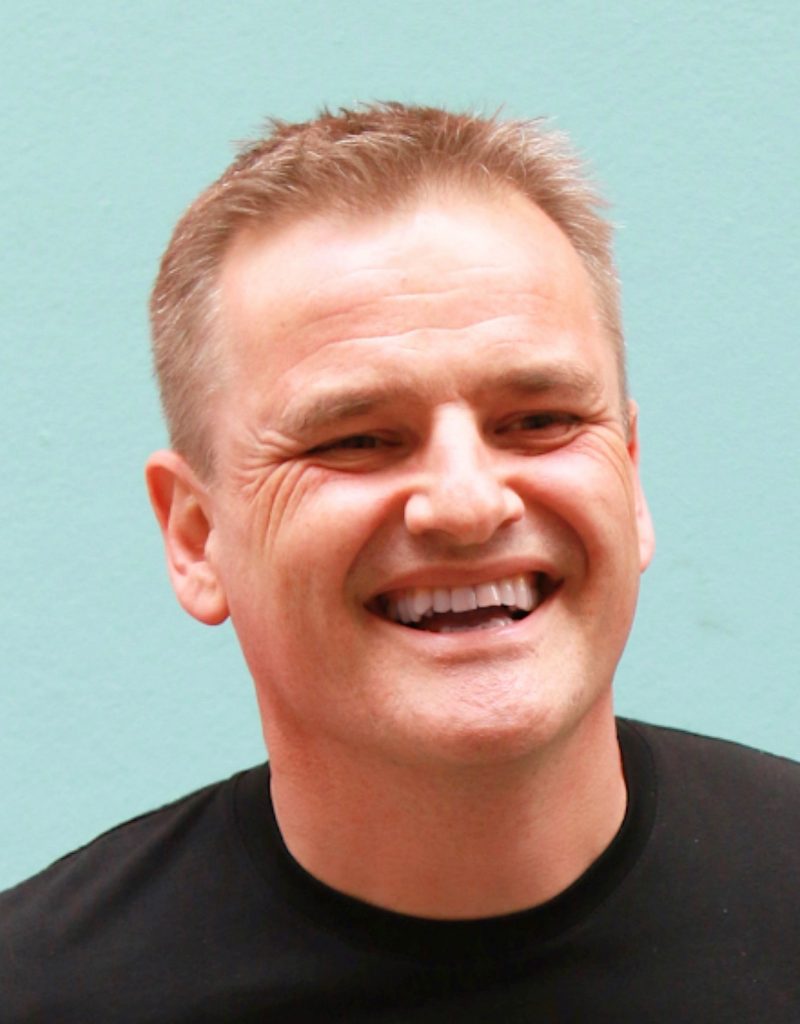Increases in diversity and inclusion initiatives are underway across businesses, but it’s apparent that they aren’t being felt by all groups, says Gareth Jones. A lack of consideration from hiring teams, means neurodiverse individuals are far less likely to make it through recruitment processes and into employment
Despite mass growth in the number of job vacancies in recent months, not all applicants are able to take advantage of the opportunities. In fact, when hiring practices are designed with limited ideas of ideal candidates, skills, and abilities – and this is often the case – a rise in job openings may not be the only change in recruitment that is needed – especially for neurodivergent candidates.
Neurodivergent individuals have variations in the brain which can affect mood, sociability, attention span and other mental activities.
Common diagnoses for those experiencing such traits can be Dyslexia, Autism, Attention Deficit Hyperactivity Disorder (ADHD) and Obsessive Compulsive Disorder (OCD), among many others.
Problematically, common recruitment practices and day-to-day work tasks are often not created with neurodiverse employees in mind. As such, despite having a range of talent and in-depth knowledge in certain areas, they are regularly overlooked.
A non-neurodivergent or ‘neurotypical’ applicant will not think twice about the recruitment process, yet processes they may consider ‘basic’ can be problematic for others: reading and writing assessments can greatly disadvantage dyslexic candidates, while certain noises or lighting can be off-putting for those with autism.
A historical lack of consideration from hiring teams in these areas means that neurodiverse individuals are far less likely to make it through recruitment processes and into employment. In fact, in the UK, just one in five autistic people are in work, while past studies reveal that nearly four in 10 autistic individuals in the US are unemployed.
Evidently, though increases in diversity and inclusion initiatives are underway across businesses, it’s apparent that they aren’t being felt by all groups. Tracing limitations and biases in current recruitment processes back to the source helps to establish why so many neurodiverse applicants are being failed.
An ‘invisible’ disability
Neurodivergent diagnosis is sometimes likened to an ‘invisible’ disability. Many conditions experienced by neurodivergent individuals are unnoticeable to others and, therefore, mostly left unsupported in work. In some cases, neurodivergent conditions like dyslexia are left undiagnosed.
Also, while there is increasing representation of other minority groups in the workplace, representation and visibility surrounding neurodiverse employees is lacking. With few role models, it is even less commonly understood.
Problematically too, misconceptions around neurodivergent traits and abilities lead to misconstrued and narrow stereotypes, despite the fact that these conditions can be experienced and displayed in a myriad of ways.
Such inaccurate stereotypes often lead to misunderstandings and a lack of recognition from neurotypical individuals. Accordingly, common statements such as ‘you don’t seem autistic’ can invalidate the experiences of neurodivergent candidates and coincide with a lack of support in the recruitment process.
Such is the problem that without disclosure of diagnosis many hiring managers or recruiters cannot recognise the need for any accommodations in the first place. Yet one study shows that individuals who disclosed their autism diagnosis to employers were three times more likely to gain employment.
Identifying neurodiverse candidates
The problem goes beyond individual hiring managers and teams. Neurodivergent individuals lack recognition and face a range of barriers in many aspects of life. But the challenges can be particularly keenly felt in formal processes such as recruitment systems.
Within these systems, techniques that are meant to aid candidates often do not go far enough in identifying their specific needs and the best options for support. While applications can ask candidates to disclaim their disability status, many don’t dig deeper than this; as the term ‘disability’ is broad, this tick-box exercise often lacks nuance and doesn’t easily allow for the right accommodations to be made. Remember too, that opening up about disability statuses can be intimidating or uncomfortable for candidates who may fear being stigmatised, especially when neurodiversity is not widely discussed or understood. A hiring process that allows for subtleties in this situation is crucial.
As such, it’s vital that businesses put systems in place that proactively identify the need for candidate support, while also providing hiring managers with the education to recognise appropriate reasonable adjustments. Depending on the circumstances, making reasonable adjustments can be as simple as giving more time for a candidate to complete an interview or task, being open-minded to different interview formats (perhaps in-person rather than using video software), or even providing a quiet space to work that is free from distractions.
Assessing the right skills
When analysing recruitment practices with neurodivergent applicants in mind, it’s clear that common recruitment techniques and assessments aren’t searching for the most relevant skills. Instead, many hiring processes are a test of social skills and confidence which can greatly disadvantage some neurodivergent applicants.
For example, in interviews, making eye contact with the interviewer is commonly accepted as a sign of a stronger, more trustworthy candidate, whether or not this skill is relevant for the given position. If a neurodivergent candidate doesn’t display this behaviour they may be perceived as less capable – even if they have other, more relevant abilities.
Dismissing these irrelevant standards is necessary to identify applicants with traits that are true indicators of success in a role. Consider too if common achievements such as university degrees or high levels of work experience are necessary, as neurodivergent individuals may struggle to complete further education or secure work placements. In fact, estimates suggest that university students with autism are 10 times more likely to drop out than neurotypical students. Therefore, employers should focus on the abilities and skills that reveal a candidate’s true propensity for the position and put this approach into policy so that it is not left up to the discretion of individual hiring managers.
Once these new indicators of success have been identified, it’s possible that new hiring techniques may be needed. This may mean leaving behind traditional and long-held beliefs about the need for face-to-face interviews or group exercises so that firms promote a level playing field for all candidates. Think laterally and create assessments that truly get to the heart of what the business needs from future employees: using psychometric tests or games on mobile phones are more modern and can be highly accessible methods of assessing talent in an inclusive way.
Bias within hiring technologies
Human biases and perceptions are not the only barriers within hiring practices. Technology – even that which is aimed to support diversity and inclusion within the hiring process – can limit a neurodiverse candidate’s chances for success.
Why? In many instances, algorithms and facial recognition technologies are not designed to accommodate common neurodiverse traits, abilities, or reasonable adjustments. For example, AI video interviewing software that measures facial expressions can limit the chances of candidates who don’t easily convey their emotions. Similarly, voice recognition technology may not be appropriately adjusted for candidates with atypical speech patterns. Yet both characteristics are common for individuals with certain neurodiverse conditions.
Worse too, once these technologies are in place, they are not easily removed. Hiring managers must be sure to choose technologies that help rather than hinder candidates before they are too deeply entrenched within recruitment processes.
Using data to support your decisions
Of course, not all technology is a barrier. In fact, under certain circumstances – when faced with a high volume of applications, for example – technology is essential and can increase the fairness of hiring decisions. However, this technology shouldn’t have to come at the detriment of neurodiverse candidates.
In some instances, technology has the ability to greatly support those with neurodiverse conditions – especially technology that can accurately collect candidate data to aid hiring managers’ decision making. The more applicant data that can be collected, the more that can be done to support neurodiverse candidates and increase understanding of how to assess them fairly and help them reach their potential. Data can also help identify if there is a high drop-off rate from neurodiverse candidates at any stage in the application process, highlighting if any aspect is unfair and needs amending.
Not only this, but larger data sets can also help to reveal the true potential of candidates within the workplace. With a better view of an individual’s neurodiverse condition and the context in which they’ve come to achieve their skillsets and abilities, employers can better gauge their propensity for success within a certain role. It can also help hiring managers assess an individual’s potential for future development when aided with the necessary adjustments.
Fully embracing diversity and inclusion
Though efforts to move toward a more diverse and inclusive workforce have improved greatly in recent years, neurodivergent individuals are still largely not accommodated for or fully valued for their abilities. Hiring managers may have a better sight of how to support candidates with different genders, ethnicities, sexualities, or religions, but the same efforts have not been made – or even understood – when it comes to neurodiversity.
By increasing recognition around the true potential of neurodiverse employees, however, we can encourage changes in hiring practices that embrace the range of skills, knowledge, and viewpoints they can bring to an organisation.

is the CEO of recruiting startup, Headstart. A regular speaker and blogger on technology and the future of work, he has spent much of the past 20 years challenging conventional thinking around how we manage and lead people at work and how to use technology to improve business and individual performance.



